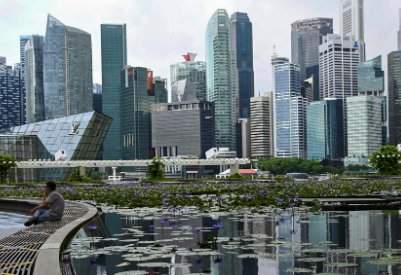Singapore: The proportion of Indian professionals in Singapore has doubled from 13 per cent to 26 per cent between 2005 and 2020, a senior minister said Tuesday, underlining that the rise in their numbers was due to the global trend in the demand and supply for tech talent and not because Indian nationals are given ‘favourable treatment’.
As Singapore’s economy slows down amid the coronavirus pandemic and job losses mount, the locals blame that the Comprehensive Economic Cooperation Agreement (CECA) — a free trade agreement signed in 2005 between Singapore and India — are letting Indian nationals into Singapore to steal jobs from locals.
The proportion of employment pass (EP) holders in Singapore who are Indian nationals has doubled from 13 per cent to 26 per cent between 2005 and 2020, Manpower Minister Tan See Leng told Parliament.
The increase was driven by the rapid growth of Singapore’s digital economy and finance, as well as trends in the global demand and supply for tech talent, and not because Indian nationals are given “favourable treatment” under the CECA, Tan was quoted as saying by TODAY newspaper.
The minister also pointed out that there was a misconception that if Indian nationals do not take up such jobs, these positions would go to locals instead.
While there is a “good Singaporean talent pool”, it was not enough to meet the needs of multinational enterprises investing in Singapore, he said.
“As every sector seeks to be digitally enabled, their need for tech talent has grown significantly,” the minister said, emphasising that Singapore currently does not have enough locals to fill the jobs available. In the infocomms sector alone, 6,000 jobs remain unfilled, the Straits Times reported.
As per manpower ministry data, there are 1,231,500 foreign workers, including 177,000 EP holders, in Singapore as of December 2020, with most of them in the information and communications technology (19 per cent), professional services (19 per cent) and finance sector (15 per cent).
An Employment Pass allows foreign professionals, managers and executives to work in Singapore. Other types of passes include S pass for mid-level skilled staff; Work Permit for semi-skilled foreign workers in the construction, manufacturing, marine shipyard, process or services sector; and Work Permit for foreign domestic workers.
Tan said Singapore cannot close itself off to foreign workers and tell foreign investors that they can only hire Singaporeans, as this would lead to many not investing in the city-state.
Dismissing the misconception that most of the foreign workers are Indian nationals, Tan said the countries where most EP holders come from are China, India, Japan, Malaysia, Philippines and the United Kingdom.
These nationalities have made up two-thirds of all EP holders since 2005.
While the percentage of workers from India has doubled since 2005, that of EP holders from China has remained relatively stable.
Tan said while China and India are two of the largest suppliers of tech talent globally, many startups worth over USD 1 billion have emerged in China which led to many Chinese staying put in their home country to work.
Indian nationals with tech skills, however, continue to look overseas, partly because they have the advantage of being able to speak English, the minister said.
Underling that the migration of Indian tech professionals is not unique to Singapore, Tan gave the example of how India is now the second largest source of immigrants in the US and the third largest in the UK.
“Given our relative shortage of manpower, even if the workers don’t come from India, they will come from somewhere else…The point is: are they helping our companies, are they helping us to grow our economy and create better Singaporean jobs? The answer is yes,” he said.
Tan, however, acknowledged that this increasing concentration has caused social friction and anxiety among Singaporeans and this is understandable and to be expected given the transient nature of EP holders.
“Apart from some EP holders who settle down and become Permanent Residents (PRs) or Singapore Citizens, most of them work here for a few years and they either return home or move on elsewhere. So it is to be expected that they are different, and we feel they are different,” he said.
The current situation with Indian nationals, said Tan, is similar to what happened in the 2000s when there was some anxiety when the share of Chinese nationals working in Singapore increased significantly.
“We have to bring in the talent and skills to keep our economy growing, while tracking that the number of foreigners in our midst stays at a level we are able to cope with, and manage the social frictions that will arise from time to time. This is a series of trade-offs.
“It is not a once-off adjustment. It is a constant balance that we have to continuously monitor and get right,” Tan said, adding that the government does monitor the concentration of nationalities in firms through the Fair Consideration Framework.
Tan reiterated that the government has zero tolerance towards discriminatory hiring practices and all employers are required to comply with the Fair Consideration Framework. Companies have to first advertise vacancies on the MyCareersFuture job portal for Singaporeans before they can hire foreigners, he said.
“The simple point is that while we have a good Singaporean talent pool, our pool is not large enough to fulfil all of the needs, the breadth and the depth of these enterprises. And very often also foreigners bring in skills which complement the Singaporeans’ skill sets as well,” he said.
PTI
